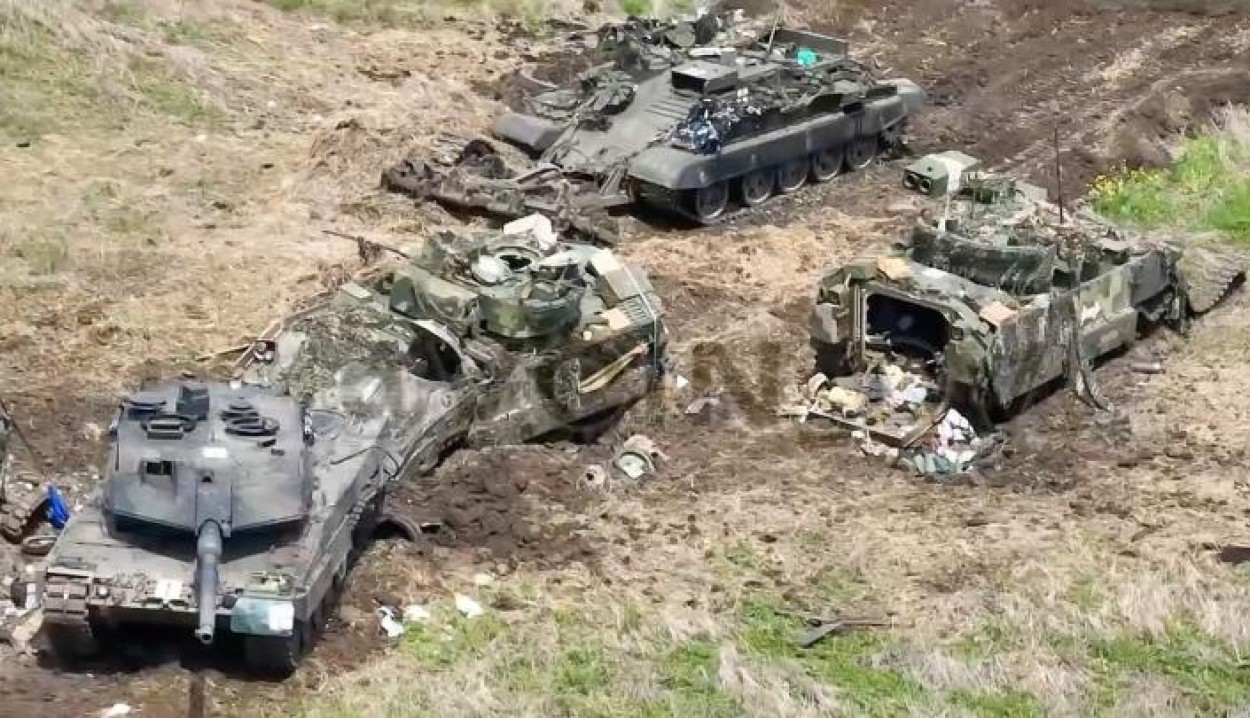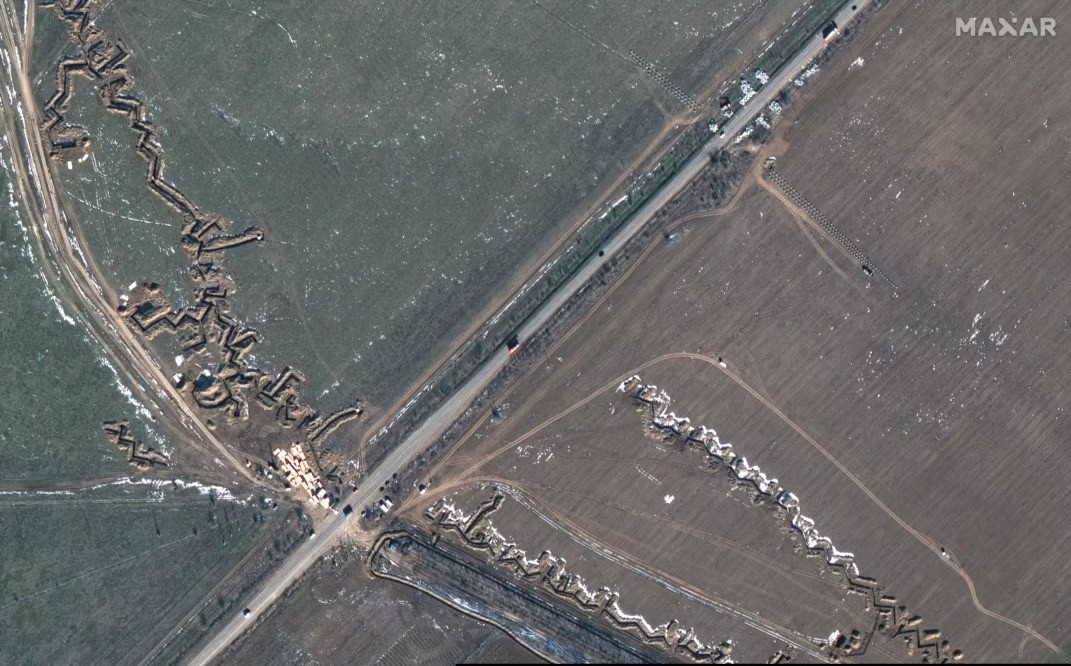According to a leading think tank, Ukraine is making small, incremental gains against Russia by coming close to or almost breaching its formidable defensive line in the east and the south by shedding North Atlantic Treaty Organization (NATO) and Western tactics.
This came after a failed counteroffensive earlier in the summer that involved attacking the Russian defenses head-on with tanks and armored vehicles, leading to tremendous losses.
Russia’s deep defenses consist of tank ditches, barbed wires, anti-armour obstacles called ‘dragon’s teeth,’ minefields, a well-prepared network of trenches and bunkers, and small mobile teams of All-Terrain Vehicle (ATV)-mounted airborne troops firing anti-tank guided missiles (ATGMs) hitting both enemy tanks and troops concentrations.
Behind these lines are diverse tube rockets, howitzer artillery, and helicopter gunships like Ka-52 Alligator, Mi-28 Havoc, and Mi-35 Hind providing air support.
A report by Natalia Bugaynova on the Institute for the Study of War (ISW) now says that the infamous pictures of rows of destroyed Leopard tanks and Bradley Infantry Fighting Vehicles (IFV) that marked Ukraine’s disastrous counteroffensive were owing to the Western/NATO warfighting style that it trained the Ukrainian army in.
“(Large-scale) mechanized breaches that NATO trained Ukraine’s counteroffensive brigades to execute are incredibly difficult and are not the only option available to Ukrainian forces,” said her report on ISW.
Ukraine Gives Russia Dose Of Own Medicine
While Russia is still strategically strong with the defensive line intact throughout the east and the south, Ukraine is using Moscow’s tactic of attritional warfare, which might involve taking either heavy losses but making gains slowly and steadily (or both) instead of going for swift, sweeping offensives in a ‘long war’, marks an interesting ideological-military moment in the war.
Russia conducted the war in this manner for nearly one-and-a-half years and controlled 20 percent of Ukrainian territory. Parallelly, it exploited the delay from the West in sending Ukraine heavy armor to construct these very defenses between late 2022 and mid-2023.
Ukraine resorting to this tactic, combined with the heating up of the Black Sea and Crimean theater, entails the war dragging on even longer. This might morph into the first real military-strategic threat to Russian military supremacy if the West and Ukraine keep up the pace.

‘NATO & West Warfighting Does Not Work For Ukraine’
Criticizing the West for “doubting…Ukraine’s way of war” and calling for “(committing) to sustaining Ukraine’s initiative on the battlefield,” new Ukrainian tactics, after encountering initial setbacks, were increasingly successful in using minor infantry assaults backed by precision fires to make inroads against Russian defenses.”
Shedding more light on how Ukraine’s attritional warfare pans out on the ground, defense analyst and military historian Sandeep Mukherjee cited the example of Ukraine breaching Russia’s first line of defensive obstacles near Robotyne. “It took three months for Ukraine to approach the first line of defense between Robotyne, raising the question of how long it would take to cross it. But it took just three weeks to breach them,” Mukherjee said, crediting this achievement to Ukraine dumping the NATO doctrine.
Even after breaching it, Ukraine had stopped sending armor to the southern front. It was rather pressing in small infantry teams, which can operate in the defenses primarily meant to destroy tanks.
“The Russians are a little more than surprised now since enemy soldiers inside their lines can harass them and are not really going on the offensive. But neither are they allowing them to regroup, rearm, and rotate fatigued units.
“This strategy involves keeping up the pressure by constantly needling the enemy, making localized advances throughout the defensive line, and denying him the time to adapt instead of trying to retake territory. But this tactic succeeds only in the long run where Ukraine needs to keep the momentum going throughout the winter and over the next few months,” Mukherjee added.

Mukherjee uses this line of argument to commend Ukraine’s commitment to trying to take Bakhmut, an attempt that took several thousand soldiers and which Western analysts slammed as an unnecessary, wasteful “prestige” pursuit. “They have now prevented Russia from creating a strategic reserve in Bakhmut,” adds Mukherjee, specializing in World War 2 military history.
Fight Like A Terrorist? Lessons From Al Qaeda, Taliban & LTTE Are Relevant
Ukraine’s metric for success is how long it conducts prolonged attritional war against the Russian army by conserving its combat power while degrading the Russian military. In this phase of the war, Ukraine has to win by not controlling territory, while Russia might lose when controlling territory.
It is not an overstatement to qualify this as a somewhat guerilla tactic, where militias and insurgents, without a conventional army, fight an occupying force in piecemeal, small battles instead of taking it head-on.
The wars in Iraq, Afghanistan, Vietnam, and India’s immediate neighborhood (Balochistan, Bangladesh, and Sri Lanka) have seen the Al Qaeda, Taliban, Viet Cong, Baloch freedom fighters, Mukti Bahini, and the LTTE fight this way.
Except for the difference that the Ukraine war has not turned into an insurgency, where Ukrainians living in territories now occupied by Russia have taken up arms and are conducting a partisan battle, the underlying philosophy behind the doctrine is the same. It would be essential to see how the Russian army adapts and possibly changes its posture in the coming months.
- The author can be reached at satamp@gmail.com
- Follow EurAsian Times on Google News




